Shake Up Your Boundaries
Six assorted examples
Marco Giancotti,

Marco Giancotti,
Cover image:
Photo by Aleš Čerin, Unsplash
The way we think is entirely based on mentally chopping up the world into discrete entities—things and concepts—pretending they are less connected with everything else than they really are, and forgetting, at least for a while, the details inside them. I described this at length on Plankton Valhalla (my essay site) when I wrote Boundaries Are in the Eye of the Beholder, and in several shorter posts on this blog. Today I want to grok that idea better with a few examples from nature and life.
For those who haven't read those other posts, here is a flash summary: I call those generic "things" and "concepts" black boxes. Each black box is an atomic unit in your mind—at least in a given context—and it's disarmingly simple. It has a boundary, an (ignored) inside, and an outside that encompasses the rest of the universe.
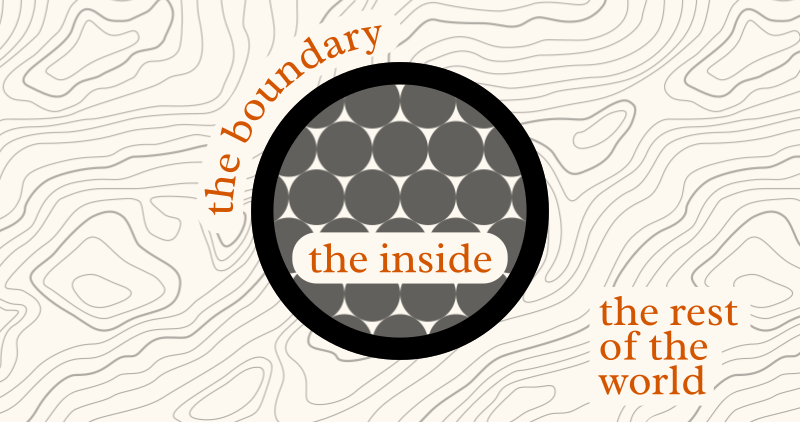
So when most people talk about going cycling in the hills, they have a black box in their mind called "bicycle" and they don't think or care about the individual pedals, the chain, and the frame that compose the bicycle. Their mental model of the weekend excursion treats "bicycle" as an atomic unit that can do a certain number of things and with which one can interact in a certain number of ways. It doesn't matter, usually, why and how those things are physically possible, and all the mechanisms that make them possible. That kind of consideration is unnecessary and would only bog down the thought process, which is simply: "we can sit on bicycles and go nice places". Mental models are useful because of how much they ignore.
Of course, a bicycle mechanic will have a different mental model, with black boxes for "pedal", "chain", "saddle", and so on. Boundaries are in the eye of the beholder, and the mechanic draws them more granularly than most when it comes to the topic of bicycles.
My question is this: if boundaries are arbitrary and subjective, how can I make sure I draw the best boundaries to help me think better? How do I redraw the boundaries to make sense of things that puzzle me?
Black boxes are, in principle, just closed boundaries, topologically equivalent to circles. This means that there are only three broad ways you can redraw a black box:
- You can enlarge (or shrink) it
- You can merge two or more of them
- You can have them intersect
Let's see some examples for each of these cases.
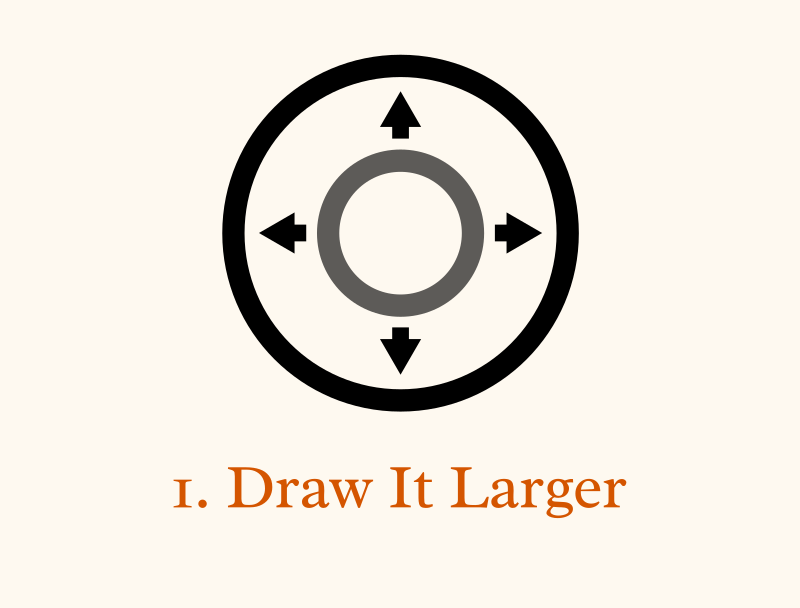
We're already quite comfortable expanding the boundaries in the case of groups of people. For example, we have terms like "team", "company", and "family" to indicate units with specific properties that transcend their individual members. But it is not enough to have a word for a group of things to correctly think in terms of larger black boxes. Here are two examples from nature.
1.1 Bees
Many species of bees use a special communication method called the "waggle dance". When a scout bee finds a good source of food like a group of juicy flowers, it returns to the nest and performs a complex dance choreography that encodes the quality, direction and distance to the food source so that other bees can find it on their own.
I find the existence of a proto-language like this in an insect fascinating. A human can "read" the message and act on that information to find a specific location far from the nest! I'm tempted to say that each bee acts as the colony's eyes, multiplying the collective ability to find food by the number of individuals in it. But reality is more complex than that, and the bee colony is smarter.
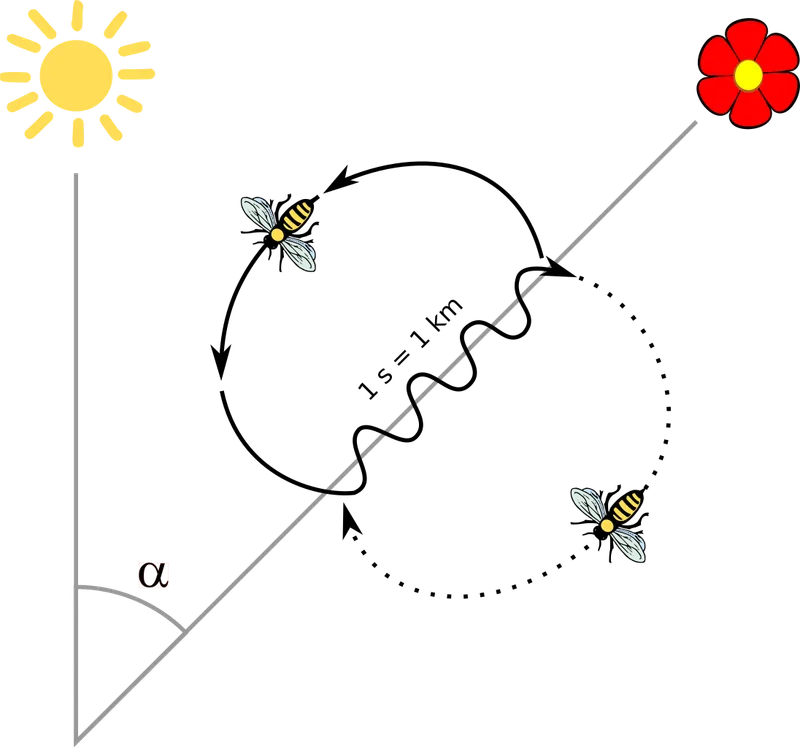
The thing is, bees are human fallible, too. They make mistakes. Sometimes they even exaggerate their accounts, because their judgments of the quality of nectar sources are inherently subjective. Besides, the signal conveyed by the dance is an approximation, and it might be misinterpreted by those who observe it.
Imagine, then, if the whole colony started dispatching big squads of optimistic bees every time a scout waggled excitedly in a new direction. That would lead to a lot of wasted time and disappointment.
So the colony starts from a state of great skepticism with these waggle dances. Most bees in the nest simply ignore the dancing scout altogether, and the few that do observe it generally do nothing at all with that information. If the scout is lucky, it might win over a small number of bees, and they will try to find the food themselves. This small expedition is closer to a group of fact checkers than committed harvesters, and often they fail to confirm the original bee's account: the colony forgets about it and goes on with its business.
But if the second wave of bees actually finds the promised food, they will return to the nest and perform their own excited dances for the same coordinates. The colony is still skeptical at this point, but the greater number of matching dances will have a bigger chance of grabbing their sisters' attention. If the information is truthful, this creates a feedback loop, where more dancers mobilize more fact-checkers, which in turn mobilize more bees still, and so on until the colony finally accepts the new location as a veritable source of food.
In other words, it is wrong to think that sources of food are found by any individual bee. The boundary should be drawn much larger than that, encompassing the whole community of bees that participates in the beautiful truth-finding feedback process. The colony, as a whole, is the black box capable of reliably finding its new energy sources. The specific actions of single bees are irrelevant and confusing, so (in this case) they belong on the inside of the black box, the part we don't need to concern ourselves with.
1.2 Beech Forests
A beech tree has a common problem: all sorts of animals love eating its seeds, and they are very good at it. On a typical year, they might eat almost all of its new seeds, which means that the tree won't be able to reproduce. Its genetic heritage is prevented from passing to future generations. And since every beech tree has this same problem, the species risks going extinct.
Now, trees have various strategies to protect their seeds from predators, like thorns and poisons, and most of these are self-defence strategies, because each tree fights for itself. Beech trees have some of these, but they also use a very different approach.
Instead of each plant controlling its own production of beechnuts, they coordinate the amount of seeds they produce with all the trees around them. Beech forests are known to synchronize over vast distances, as wide as Northern Europe, with mechanisms still unknown to science. How is this a defense strategy, though?
On most years, all beeches produce a stable but low amount of seeds, most of which are eaten by their predators, and reproduction is low. But, once every two to eight years, they all have what's called a "mast year" in which they produce many more nuts than usual. So many, in fact, that the predators can't even catch up, and are forced to leave lots of seeds uneaten on the ground. That is when most of the beech trees are able to reproduce.
This process is called the "satiation hypothesis", because it saves its seeds by filling up the animals' bellies, but it might as well be called the "starvation hypothesis": the beeches are killing their seed-eaters by starving them. The trees can't simply produce huge amounts of seeds every year—this would simply cause predator populations to swell until they could gobble up all the seeds again. So the beeches make lots of fruits for one year, allow the animals to multiply, and then they lie low for a few years, producing a small number of seeds that are not enough to feed all those baby animals.
The beech forest controls the population of its own predators—the black box that is defending itself, then, is not any individual tree but the immense community of millions of trees participating in the synchronized production. The boundary, here, should be drawn very large indeed.
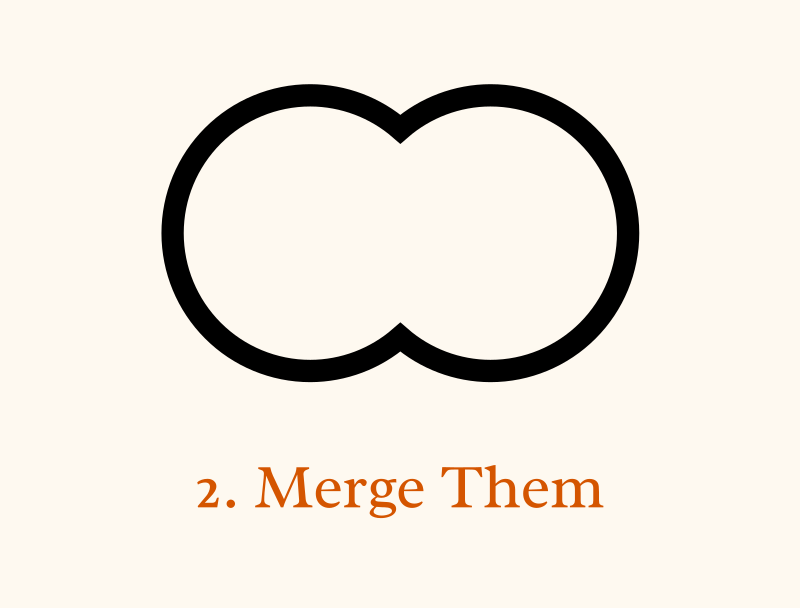
When two or more things interact closely on a regular basis, you might have to treat them as one new thing altogether.
2.1 Vehicles and Tools
In World War accounts, you sometimes encounter expressions like these (emphasis mine):
Simultaneously, like some bird of prey, they fall upon their victim and release their load of bombs on the target
— Sergeant Pruemers, Stuka Dive Bombers
I was peering anxiously ahead, for the controller had given us warning of at least fifty enemy fighters approaching very high. When we did first sight them, nobody shouted, as I think we all saw them at the same moment. They must have been 500 to 1000 feet above us and coming straight on like a swarm of locusts.
— Richard Hillary, Messerschmitt Fighters
When you see a squadron of enemy bombers homing in on your home city, you may think of them as people inside flying machines, or you may think of them as terrifying creatures made of steel and explosives. At first, the latter interpretation seems more emotional and inaccurate, but is it really?

When a person enters a killing machine on a mission to kill, they cease to be "just a person". The range of actions and effects they can bring about in the world changes dramatically. The behavior of the human inside—possibly even their psychology—changes by virtue of this new environment and range of influence. It is of little use thinking about the aircraft and the pilot as two separate entities: that mental model is too clunky and stiff for many of the relevant problems you need to solve.
It may be better, then, to merge their boundaries in your mind for the time being, treat them as one entity that is neither machine nor person. Your thoughts and predictions should focus on the novel and unique properties of this chimera, and your observations on refining your understanding of that black box as a whole.
We tend to do this kind of merging all the time in our daily lives, albeit instinctively. On a city street, you are more likely to say "watch out, a car is coming" than "watch out, a person is coming in a car," even though the latter would technically be more precise. I think this is for a good reason: the car is the person—the two can't be separated.
I'm not advocating for dehumanizing drivers and pilots, or to lessen their responsibilities in any way. There are real people in there, with mostly rational minds that work mostly like they always do. What I'm saying is that the way you think about a person in a vehicle, and really with any tool and technology whatsoever, should be as a unit that is different than the sum of the elements.
When drivers curse at "that asshole" who dangerously cut in front of them, the "asshole" part is most accurately applied to the human-car unified black box, not just at the person inside. You'll often find that the person ceases to be an asshole the instant they step out of the driver's seat.
2.2 Lichens
Here's another one from nature: what we call with the single word lichen is actually two very different organisms merged together into a single entity. It is really a fungus hiding a population of green algae or cyanobacteria inside itself.
The fungus, with its strong filaments and its ability to absorb water and minerals from the environment, provides the structure and protection necessary for the photosynthesizing organisms to thrive. On the other hand, the algae inside acts as the power source of the lichen with its ability to convert sunlight into chemical energy.
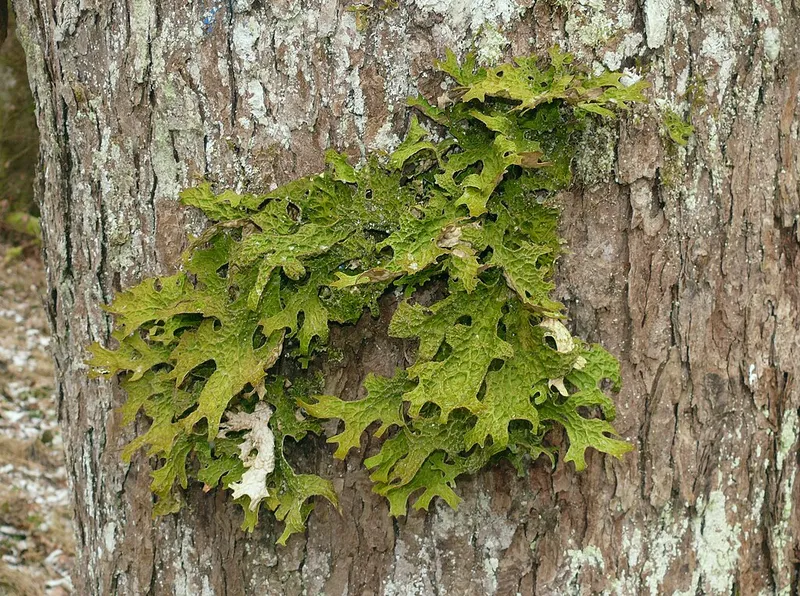
Lichens were the first officially recognized instance of symbiosis in biology. It is a mutually-beneficial relationship, and an inseparable one: you can't have a lichen that is all fungus and no algae, because the fungus can't do photosynthesis. This is a case in which we learned about the merged boundary before we found that it is a composite of smaller ones.
In most cases it is fine, even sensible, to treat lichens as a single organism, with its unique traits and behaviors, because it acts as a unit at all times.
Scientists, though, have the option of doing the opposite of merging, instead splitting the boundary into two black boxes. This operation has the advantage of making some finer details and mechanisms clearer, and it is a staple of science as a whole (sometimes called reductionism). But, once again, just because a black box can be opened to reveal smaller black boxes inside, it doesn't mean that it's always a good idea. The right boundary depends on what you are trying to achieve.
(There is another interesting thing about lichens that I should mention. Although the fungus is dependent on the algae or cyanobacteria as energy source, the same is not necessarily the case the other way around. Those photosynthetic organisms can usually survive well enough on their own, although they certainly benefit from the added protection of the fungi. In a sense, then, the fungus is "farming" its photosynthetic partner, and the relationship is not exactly symmetrical. This leads us to the last major way in which you can redraw boundaries.)
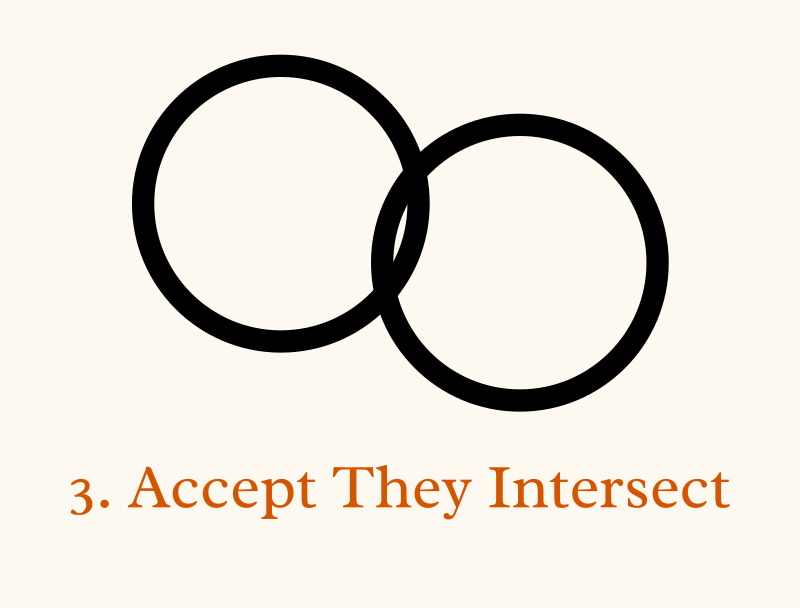
This, frankly, shouldn't happen. The whole meaning of "boundary" is that it stops things from passing through it, right? And yet the fuzzy boundaries that we project onto reality don't even respect that constraint properly. Black boxes can intersect even when they don't fully merge. Or, perhaps, the merging of two boundaries into one is simply an extreme case of intersection that is made permanent.
Even when two bounded entities make more sense as distinct and autonomous, their interactions may make it impossible to consider them separately for some purposes. This last couple of examples should help you see this.
3.1 Horizontal Gene Transfer
Did you know? The days when biologists understood reproduction and inheritance as the unavoidable hallmarks of evolution are behind us. Already a century ago biologists had some hints that bacteria can sometimes absorb genes from other organisms, and be forever changed by that. At first these events were thought to be freak accidents, rare occurrences of limited importance: reproduction is how evolution works, we thought.
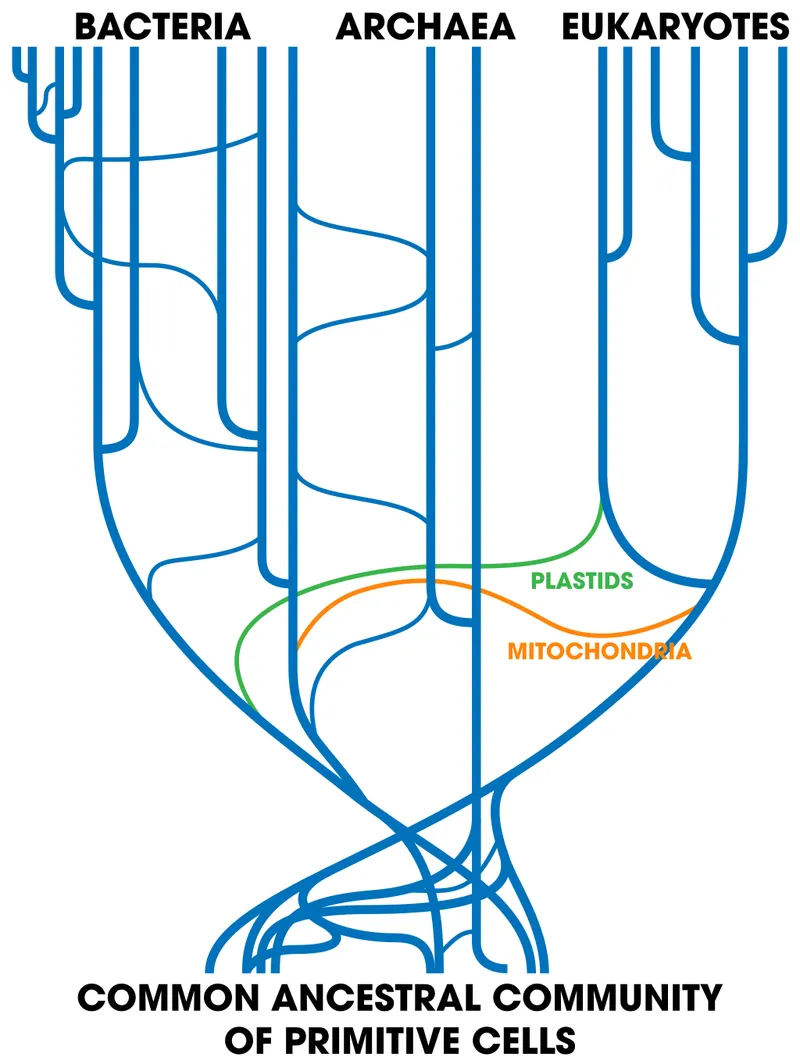
The picture has gradually changed as the evidence piled up, though. Now this kind of horizontal gene transfer (HGT) is believed to be a major mechanism for new forms of life to evolve and adapt to their environment. There are many ways in which it can happen. For example, some of them pick up stray DNA segments that were floating around, others have viruses implant them directly in their chromosomes, and others still exchange genes when they come in contact with other bacteria.
HGT was especially common at the dawn of life, when all organisms were single-celled and most susceptible to the infiltration of alien DNA. At the time, it must have affected the evolution of early life forms in major ways. It may not even make sense to talk about distinct species and lineages for them—it was a web and a mishmash of genetic recombination. Nowadays the phenomenon is rarer because of the added complexity of multi-cellular life, but it still happens. By some estimates, the human genome itself contains a non-negligible amount of DNA "sourced" from other life forms.
So we have a situation in which two organisms live and act separately, as their own autonomous black boxes, but may suddenly interact in a way that fundamentally changes their identity.
If you don't acknowledge this temporary intersection of their boundaries, some phenomena won't make sense: among others, cells with phenotypes different from their mothers and harmless bacteria becoming deadly by simply being in the presence of the broken remains of infectious bacteria.
3.2 Parents
Speaking of lineages, what about sexual reproduction? Unlike HGT, in the case of a male-female pair of a sexual species no DNA is transferred between the two, and they remain largely unchanged by their rendezvous. They appear to be sharply separate black boxes. Yet, they do something very peculiar together: they both need each other in order to produce their offspring—they can't make half a baby each and stick it together afterwards.
Again, we have a case in which two entities are neither fully independent nor can be merged into a single boundary as in the case of a symbiotic relationship. Their boundaries intersect only temporarily, but the effects of that intersection are unique and long-lived.
More generally, every interaction is necessarily an overlapping of boundaries, a cooperation that transcends the contributions of both sides and becomes something else of its own. This may seem obvious in the cases of parents making children, but it is a universal truth that applies to much more than that.
We tend to focus on the individual people or elements in a situation—often only on the single biggest contributor—and forget that the interaction between those elements is more important than each contributor. Too rapt in our considerations of the different black boxes, we fail to look at their intersections.
How to redraw your boundaries? A starting point is to ask yourself:
- Am I looking at the right scale of organization? Instead of blaming Bill, maybe I should blame the whole situation Bill was in.
- Can I really consider those two elements separately? The killer was not the gun, the killer was not the human who pulled the trigger, the killer was the union of the two: the armed person.
- Is the interaction more important than the individuals here? Forget who did "A" and who did "B" for a minute: how does "AB" work? ●
Cover image:
Photo by Aleš Čerin, Unsplash